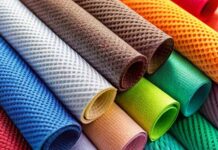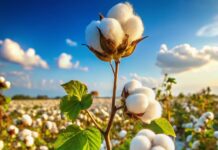The concept of energy harvesting from textiles is transforming the textile industry, paving the way for a new era of smart fabrics that can generate power while maintaining flexibility, comfort, and functionality. This innovation is driven by advancements in materials science and the growing demand for sustainable energy solutions. From wearable technology to architectural applications, energy-harvesting textiles are quickly becoming a focal point of research and development. In this article, we delve into the mechanisms behind this innovation, explore recent research, and examine its potential applications in the business-to-business (B2B) market.
The Science Behind Energy-Harvesting Textiles
Energy-harvesting textiles incorporate advanced materials and technologies that convert external stimuli — such as motion, heat, light, or mechanical pressure — into electrical energy. This is achieved through processes like:
- Piezoelectricity: Certain materials, such as polyvinylidene fluoride (PVDF), generate electricity when mechanically stressed. These materials can be woven into textiles to harvest biomechanical energy from human motion, making them ideal for wearable applications.
- Thermoelectricity: By exploiting temperature differences across textiles, thermoelectric generators convert heat into electrical energy. This is particularly effective for garments worn in environments where temperature gradients are significant.
- Photovoltaics: Solar textiles integrate photovoltaic cells at the fiber or fabric level, enabling them to capture solar energy. These textiles can power small electronic devices or contribute to the energy grid.
- Triboelectric Nanogenerators (TENGs): These systems harvest energy from friction or vibrations, such as the motion of a wearer’s body or environmental factors like wind and rain.
By combining these technologies, multifunctional textiles can simultaneously harvest energy from multiple sources, creating versatile and efficient power-generating fabrics.
Real-World Research and Innovations
The development of energy-harvesting textiles has gained momentum in recent years, with promising research and applications making headlines:
- Piezoelectric Fibers for Wearable Tech: Researchers at Hong Kong Polytechnic University are integrating piezoelectric polymers into fabrics, enabling clothing to generate electricity from body motion. These textiles hold potential for athletic wear, where energy harvested from activity can power wearable sensors and devices.
- Solar Textiles in Architecture: Solar textiles, incorporating flexible photovoltaic cells, are being used in architectural applications like solar curtains and awnings. For example, solar-powered window shades not only block sunlight but also generate electricity to power smart home devices.
- Hybrid Energy Harvesting for Military and Healthcare: Advances in hybrid energy systems have enabled textiles to harvest both electromagnetic and mechanical energy. In a study by the Advanced Textiles Research Group at Nottingham Trent University, military uniforms with embedded energy-harvesting threads were developed to power communication devices, sensors, and GPS trackers in the field.
- Textile Triboelectric Nanogenerators (T-TENGs): A 2023 study highlighted the potential of triboelectric nanogenerators integrated into textiles for harnessing friction-based energy. These applications range from wearable electronics to outdoor equipment, such as self-powered tents.
- Case Study – Sportswear and Smart Fabrics: Global sportswear companies have begun prototyping energy-harvesting athletic apparel that powers wearable fitness trackers. The fabrics are embedded with piezoelectric fibers that generate electricity from running or walking movements. Prototype garments showcased at the 2023 Smart Textiles Global Conference demonstrated their ability to keep devices charged during prolonged use.
Applications in the B2B Market
The potential of energy-harvesting textiles goes beyond wearables. Their use in various industries is set to revolutionize traditional practices, creating new opportunities for businesses:
- Fashion and Wearables: The fashion industry is embracing smart textiles for wearable technology. Energy-harvesting fabrics enable self-powered garments, reducing the need for frequent charging of smart devices. High-end brands are exploring these textiles for luxury designs, offering both functionality and sustainability.
- Healthcare: In the healthcare sector, energy-harvesting textiles can power patient-monitoring systems embedded in hospital bedding and garments. This innovation eliminates the need for bulky equipment, improving patient mobility and comfort.
- Automotive: Automotive interiors, such as seats and floor mats, can integrate energy-harvesting textiles to capture vibrations and heat from cars in motion. This energy can power onboard electronics, contributing to greener transportation solutions.
- Construction and Architecture: Smart building facades made from energy-harvesting textiles are being developed to reduce energy consumption. These materials can generate electricity for lighting and HVAC systems, aligning with green building standards.
- Outdoor and Industrial Applications: Energy-harvesting tarps and covers for agricultural and industrial equipment provide off-grid power solutions. For instance, solar-powered tarpaulins can generate electricity during farming operations, powering irrigation systems or climate control devices in remote areas.
Challenges and Limitations
While energy-harvesting textiles show immense potential, several challenges must be addressed before they achieve widespread commercial adoption:
-
Efficiency: Current energy outputs are often low, limiting the scalability of applications.
-
Durability: Textiles must withstand wear and tear while maintaining their energy-generating capabilities.
-
Cost: The integration of advanced materials and technologies into fabrics remains expensive, which could hinder mass production.
-
Environmental Factors: External conditions, like humidity and temperature, can impact energy-harvesting performance.
Ongoing research aims to overcome these hurdles, focusing on improving the efficiency, durability, and affordability of energy-harvesting textiles.
The Future of Energy-Harvesting Textiles
The global market for smart textiles, including energy-harvesting fabrics, is projected to grow exponentially. According to recent reports, the market size will reach $29.1 billion by 2033, driven by advancements in renewable energy and materials science.
For B2B industries, this trend presents an opportunity to integrate energy solutions into existing products, reduce reliance on traditional energy sources, and align with sustainability goals. Collaborations between textile manufacturers, energy researchers, and technology companies will be critical in bringing these innovations to market.
As energy-harvesting textiles evolve, they promise to transform not only the textile industry but also sectors ranging from healthcare to construction. For businesses investing in smart fabrics, the future holds immense potential for innovation and growth.






























